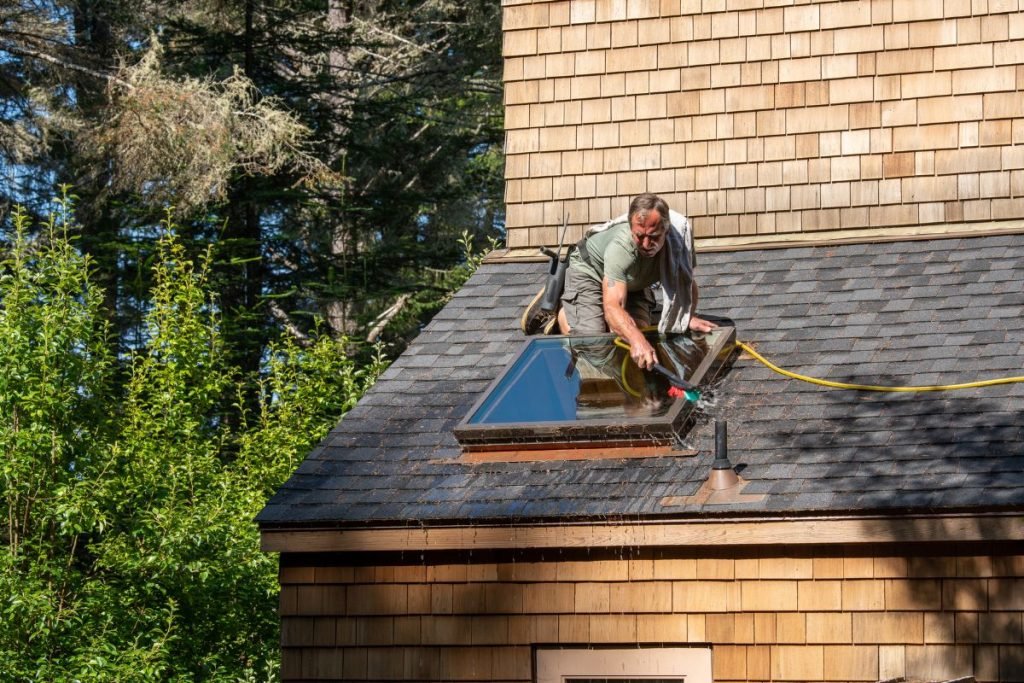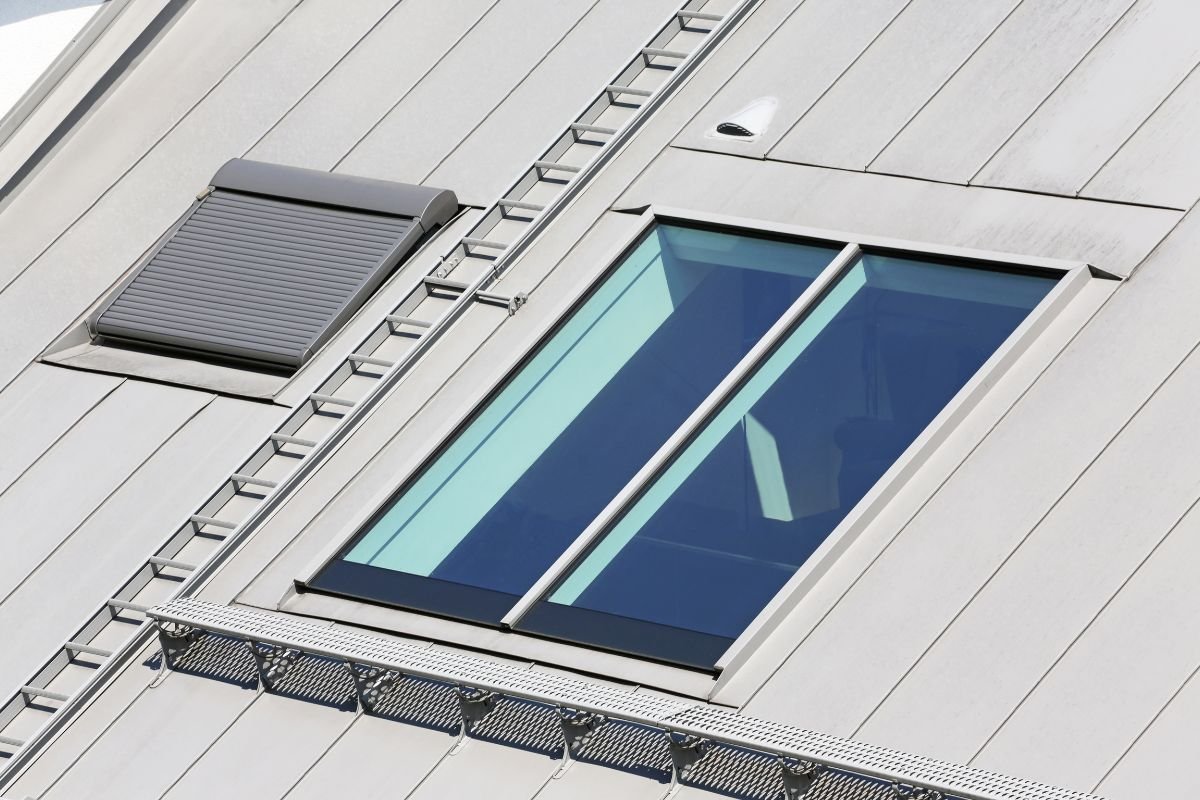
Adding a roofing skylight can transform your home by flooding rooms with natural light, improving ventilation, and even reducing energy costs. This comprehensive guide will walk you through everything you need to know about roofing skylights, from understanding the different types available to the installation process and long-term maintenance. Ultimately, we’ll help you decide if a skylight is the right choice to enhance your living space.
What is a Roofing Skylight?
A roofing skylight, also known as a roof window, is a window installed directly into your roof. Its primary purpose is to bring natural light into a room, offering a more expansive and brighter alternative to traditional windows. Skylights come in various shapes, sizes, and styles, and they can significantly impact the ambiance and energy efficiency of a home.
Why Choose a Roofing Skylight?

Skylights offer a multitude of benefits that extend beyond just aesthetics. They can significantly improve your home’s comfort, energy efficiency, and overall value.
- Increased Natural Light: Skylights bring significantly more natural light into a room compared to windows, reducing the need for artificial lighting during the day.
- Energy Efficiency: Strategically placed skylights can harness passive solar heating in the winter, reducing heating costs. Venting skylights can also release hot air in the summer, lowering cooling costs.
- Improved Ventilation: Venting skylights allow fresh air to circulate, improving indoor air quality and reducing humidity.
- Enhanced Aesthetic Appeal: Skylights can add a unique architectural element to your home, enhancing its visual appeal and increasing its market value.
Exploring Your Skylight Options
Choosing the right type of skylight is crucial for achieving your desired outcome. Here’s an overview of the most common types:
- Fixed Skylights: These skylights do not open and are primarily used for providing natural light. They are generally less expensive than venting models.
- Venting Skylights: These skylights can be opened to allow for ventilation. They come in manual and electric (remote-controlled) options.
- Tubular Skylights (Sun Tunnels): These skylights use a reflective tube to channel sunlight into smaller spaces, such as hallways or bathrooms.
- Materials: Glass vs. Acrylic: Skylights are typically made of glass or acrylic. Glass skylights offer superior clarity and durability but can be more expensive. Acrylic skylights are more impact-resistant and lightweight.
Have questions about roofing skylights? Contact us today for expert advice and assistance!
The Skylight Installation Process

Skylight installation is a complex process that requires precision and expertise. It typically involves cutting an opening in the roof, framing the opening, installing the skylight, and properly flashing it to prevent leaks.
- DIY vs. Professional Installation: While DIY installation may seem tempting, it’s generally recommended to hire a professional roofing contractor to ensure proper installation and avoid potential problems like leaks or structural damage. A professional can also ensure compliance with local building codes and regulations.
- Important Considerations Before Installation: Before installing a skylight, consider factors like roof pitch, framing, and building codes. Proper planning and preparation are essential for a successful installation.
For a step-by-step guide on skylight installation, check out our post on How to Install a Skylight on a Shingle Roof for tips on proper sealing and flashing.
Understanding Skylight Costs
The cost of a skylight can vary depending on several factors, including the type of skylight, size, material, and installation complexity.
- Factors Affecting Skylight Costs: Larger skylights, venting models, and glass skylights typically cost more than smaller, fixed, acrylic skylights. Installation costs can also vary depending on the complexity of the project and the roofing material.
Need help with roofing skylights? Call us today for expert guidance and assistance!
Keeping Your Skylight in Top Condition
Regular maintenance is essential for prolonging the life of your skylight and preventing problems like leaks.
- Cleaning Your Skylight: Clean your skylight regularly with a mild soap and water solution. Avoid using harsh chemicals or abrasive cleaners that can damage the surface.
- Identifying and Repairing Leaks: Check your skylight regularly for signs of leaks, such as water stains or condensation. If you notice a leak, address it promptly to prevent further damage. Often, leaks can be resolved by reapplying flashing or sealant.
Addressing Common Skylight Issues
While skylights offer numerous benefits, they can also experience certain problems.
- Skylight Problems and Solutions: Common issues include leaks, condensation, and cracks. Leaks can often be repaired by re-flashing or resealing the skylight. Condensation can be reduced by improving ventilation. Cracks may require skylight replacement.
Your Skylight Questions Answered
Here are some frequently asked questions about roofing skylights:
How long do skylights last?
Skylights typically last 15-20 years, depending on the quality of the materials and the installation.
Do skylights add value to my home?
Yes, skylights can increase your home’s value by enhancing its aesthetic appeal and energy efficiency.
Are skylights energy efficient?
Yes, skylights can be energy efficient when properly installed and maintained. Venting models can also improve ventilation, reducing the need for air conditioning.
Is a Roofing Skylight Right for You?
Roofing skylights are a fantastic way to brighten your home, improve ventilation, and potentially reduce your energy bills. By understanding the different types, installation processes, and maintenance requirements, you can make an informed decision about whether a skylight is the right choice for your home.
Thinking about installing a skylight? Call us now for professional advice and assistance!
